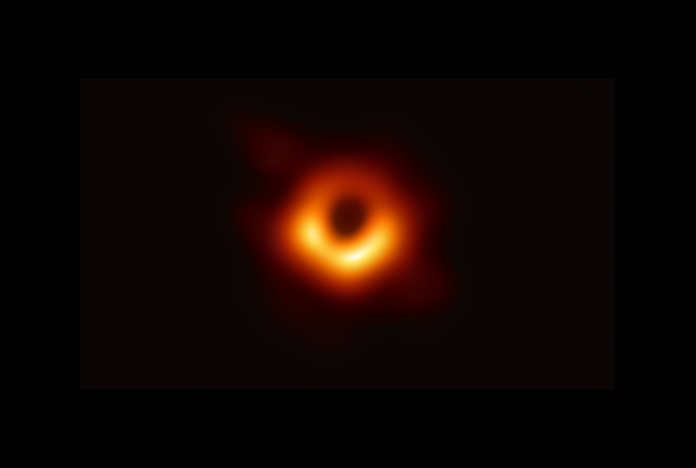This is not the first time a black hole has been spotted. It is also definitely not the first time that an image of a black hole has been captured. Prior to this, an international team called the Event Horizon Telescope (EHT) collaboration had released an image of a black hole in 2019 from a galaxy 53 million light-years away.
The same group has now released a picture of a supermassive black hole formed right in the centre of our Milky Way galaxy which is about 27,000 light-years away. It has been named Sagittarius A*.
Sagittarius A* is surrounded by the light coming from super-heated gas accelerated by immense gravitational forces. It is simply a ring of hot yellow-red flames. Sagittarius A* is four million times the mass of our Sun and the ring surrounding it is almost the size of Mercury’s orbit around our star. As this hole is 26,000 light-years in the distance from our solar system, there is close to zero possibility of us falling into any kind of danger.
One might wonder what’s so special about this hole even though it is not the first one to be spotted and captured. The reason is that it’s ‘our’ supermassive black hole. It is in our backyard.
Black holes are regions in space that have such powerful gravitational effects that they suck in everything from matter and light to time as well. They emerge from the explosive destruction of large stars.
According to scientists, almost every galaxy has a giant black hole at its centre. It is a hole where light and matter also cannot escape. This is also why it’s difficult to get their images. An AP report stated, “Light gets chaotically bent and twisted around by gravity as it gets sucked into the abyss along with superheated gas and dust.”.
Attempts to capture a similar image have been made in the past as well. However, they all failed as the black hole was found to be very ‘jumpy’.
The capturing of this image is considered to be a great breakthrough in astrophysics as it is the first-ever image captured of a black hole, a space-time phenomenon that was initially theorised by Albert Einstein and later, Stephen Hawking.





























